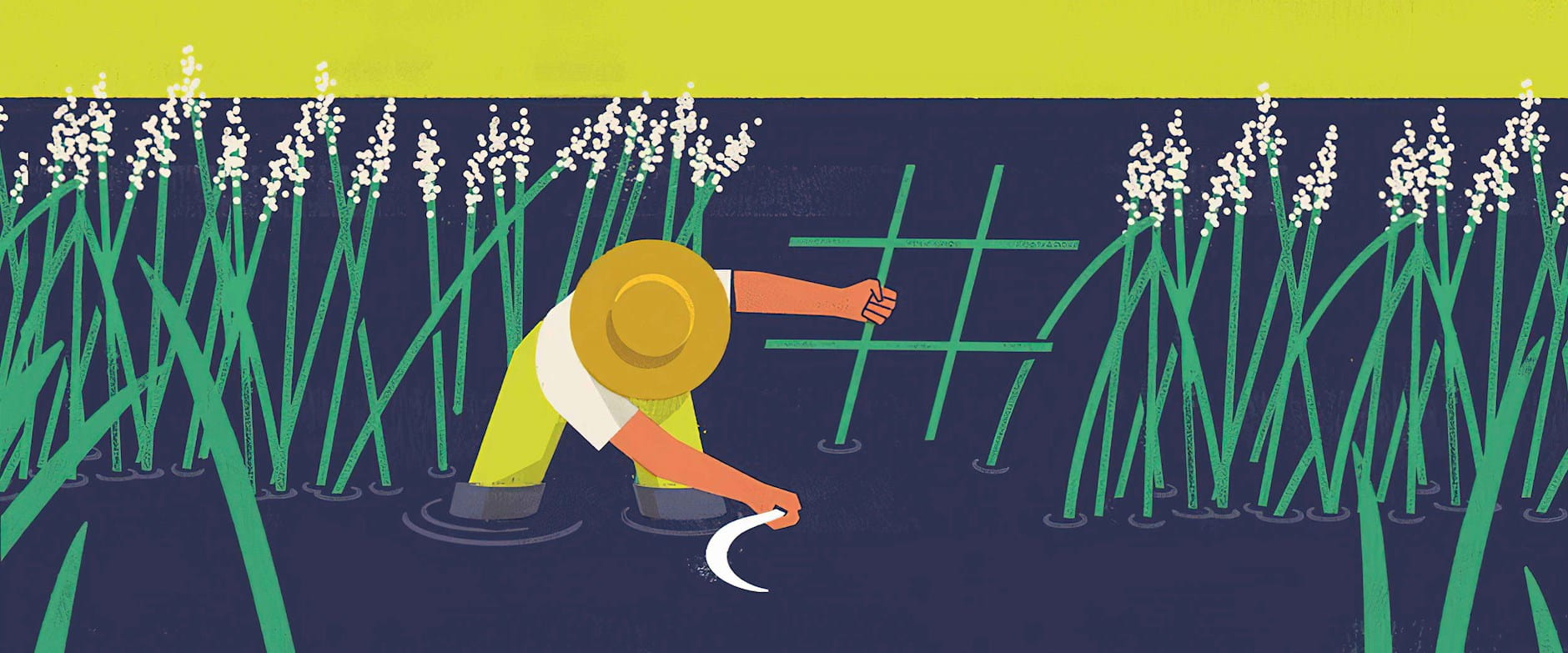
Chris Gash
The Positive Power of Social Media Influencers
Social media could potentially be used to help fight a range of social ills such as poverty, disease, and pollution.
- By
- November 23, 2020
- CBR - Marketing
Social media outlets have become platforms for misinformation campaigns and violent rhetoric, which has put them in the crosshairs of elected officials and regulators worldwide. However, an experiment by Chicago Booth’s Pradeep K. Chintagunta, Cass Business School’s Wanqing Zhang, and Purdue’s Manohar Kalwani involving rice farmers in China offers a reminder that social media influencers can play a significant role in addressing global challenges, such as dangerous pesticide use.
Many farmers and manufacturers have long maintained that they need to use pesticides to protect crops and increase yields. However, pesticides can be deadly, particularly when used improperly. The US Environmental Protection Agency classifies 68 pesticides as potential carcinogens, and in a 2017 report, the United Nations estimated that 200,000 people die each year from pesticide poisoning.
Less toxic, more eco-friendly pesticides exist, but some farmers have been slow to adopt them. In emerging markets especially, many have uncertainties about new products—doubting a product’s legitimacy or the credibility of the supplier, questioning its value, or feeling unsure about how to best use it.
In this sense, these farmers are like many other types of consumers who go through several stages before adopting a product, Chintagunta says. “First, they need to become aware of it. Next, they must consider it. Then they need to make a decision to purchase it, then actually purchase it, and finally repurchase it.”
In preliminary interviews with 533 rice farmers in China, Chintagunta, Zhang, and Kalwani learned that 74 percent of them didn’t know the name of the pesticides they were using, the ingredients, the side effects, or the proper application levels.
To see whether online campaigns could improve the situation, the researchers recruited 643 farmers in 34 villages in Zaoyang County, in China’s central Hubei Province, to participate in a field experiment from June to August 2018. They gave all the farmers free samples of a new product, a nanotechnology form of avermectin, an agent that attacks bugs’ central nervous systems. The nanotechnology delivery made the product more efficient, requiring smaller quantities.
The researchers then divided the farmers into four groups. Some, in a social media–informed group, engaged in discussion groups on WeChat, where they were encouraged to chat and post photos and videos. If participants had questions, other farmers or the researchers could answer them.
In about half of the social media groups, farmers collectively chose an influencer, typically a village leader whose opinions were respected. The researchers instructed the influencers, who weren’t deeply familiar with the product, to post discussion-group messages encouraging use of the pesticide.
Some other participants were supported via the telephone rather than social media. Farmers in this group participated in Q&A sessions with researchers and in surveys related to the new product. Because it involved one-on-one discussions rather than a free, multiuser platform, this strategy was more expensive. In a final group, farmers received the free samples but neither social media nor telephone support.
The researchers find that the social media marketing led farmers to adopt the new pesticide at far higher rates than just receiving the free samples, and those in groups with an influencer posted even higher rates.
The social media campaigns generated a 30 percent increase in product adoption compared with a control group, which translates to a potential 6 percent productivity increase and a 20 percent efficiency-driven drop in overall pesticide use, the researchers estimate.
Results from the study indicate that social media could potentially be used to help fight a range of social ills such as poverty, disease, and pollution. For example, Chintagunta says it could be crucial to ensuring that everyone who needs information on communicable-disease prevention and management receives it, and he thinks that the information could even lead to improved detection and treatment.
“Social media tools can be leveraged to amplify the first and potentially facilitate the second,” Chintagunta says.
Pradeep K. Chintagunta, Wanqing Zhang, and Manohar Kalwani, “Social-Media, Influencers, and Adoption of an Eco-Friendly Product: Field Experiment Evidence from Rural China,” Working paper, September 2020.
Your Privacy
We want to demonstrate our commitment to your privacy. Please review Chicago Booth's privacy notice, which provides information explaining how and why we collect particular information when you visit our website.